

The World's Premier Conference for 3D Innovation
3- 6 February 2025
- Hyatt Regency San Francisco Airport Hotel, Burlingame, California, USA -
Held as part of:
The IS&T International Symposium on Electronic Imaging: Science and Technology
2 - 6 February 2025
Published open-access as part of the IS&T Proceedings of Electronic Imaging.
|
|
| Monday 3rd February 2025 |
| Electronic Imaging Symposium Highlights Session Location: Grand Peninsula D |
Mon. 11:00 am - 12:20 pm |
| Join us for a session that highlights the breadth of the EI Symposium with short papers selected by their Chairs from EI conferences. The full papers are given at other times in the program. |
| Electronic Imaging Welcome Lunch (lunch provided) Location: The Grove The Electronic Imaging Symposium All-Conference Welcome Lunch provides a wonderful opportunity to get to know and interact with new and old EI and SD&A colleagues. Plan to join us for this relaxing and enjoyable event. |
Mon. 12:20 - 2:00 pm |
|
| Coffee Break | Mon. 3:00 - 3:30 pm |
| Stereoscopic Displays and Applications Session 1 Stereoscopy & Spatial Perception Location: Grand Peninsula D Session Chair: Andrew Woods, Curtin University (Australia) |
Mon. 3:20 - 5:10 pm |
3:20 pm : SD&A Conference Welcome and Introduction
 |
3:40 pm : 3D distortion modeling: A software package to represent image space perception in stereoscopic displays, Eleanor O'Keefe | KBR; Richard Tompkins | Vision Products LLC; Eric Seemiller | KBR; Marc Winterbottom, Steven Hadley | USAF 711 HPW/RHMO (United States) [SDA-329] [ABSTRACT]

 |
|
| Session Break | Mon. 5:00 - 5:20 pm |
This ever-popular session of each year's Stereoscopic Displays and Applications Conference showcases the wide variety of 3D content that is being produced and exhibited around the world. All 3D footage screened in the 3D Theater Session is shown in high-quality polarized 3D on a large screen. The final program will be announced at the conference and 3D glasses will be provided. See: the list of exhibited content.
|
The annual informal dinner for SD&A attendees. An opportunity to meet with colleagues and discuss the latest advances. There is no host for the dinner. Information on venue and cost will be provided on the day at the conference. |
| Tuesday 4th February 2025 |
| Stereoscopic Displays and Applications Session 2 Visualization Facilities Location: Grand Peninsula D Session Chair: Laurie Wilcox, York University (Canada) Joint Session with the Engineering Reality of Virtual Reality (ERVR) conference |
Tue. 8:40 - 10:30 am |
8:40 am : SD&A Day 2 Welcome
8:50 am : Case study: Love letter to skating - VR180 stereoscopic post-production workflow, Andrew Woods, Daniel Adams, Cassandra Edwards, Kerreen Ely-Harper, Andrea Rassell | Curtin University (Australia) [SDA-332] [ABSTRACT]


|
9:10 am : NEMO Explorer XR - The development of an ocean-based immersive co-design environment, Alyssa Liu, Rian Stephens, Elise Hodson, Carla Amaral, Christopher Ross, Jasmine Black, Paul Anderson, Ashley Hall, Bjorn Sommer | Royal College of Art (United Kingdom) [SDA-333] [ABSTRACT]


|
|
| Coffee Break | Tue. 10:30 - 11:00 am |
| Stereoscopic Displays and Applications Session 3 History & Future of Immersive Technologies Location: Grand Peninsula D Session Chair: Takashi Kawai, Waseda University (Japan) Joint Session with The Engineering Reality of Virtual Reality (ERVR) conference |
Tue. 11:00 am - 12:40 pm |
11:00 am : Collaborative spatial streaming: real-time auto-calibrating system for multi-device dynamic 3D capture, Tyler Bell | University of Iowa (United States) [SDA-335] [ABSTRACT]

|
11:20 am : Active 3D flat panel displays: A new implementation of an old idea, Michael Weissman, Peter Giokaris | independent (United States) [SDA-336] [ABSTRACT]

|
11:40 am : The rise and fall of SENSIO - Lessons for the next wave of consumer 3D, Nicholas Routhier | CubicSpace Technologies, Inc. (Canada) [SDA-337] [ABSTRACT]

|
12:00 pm : Baskerville Small Performances Project, Mark Box, Scott Maloney | Cambridge University (United Kingdom) [SDA-4175] [ABSTRACT] (cancelled)
12:20 pm : Bringing historical stereographs to XR headsets, Nicholas Routhier | CubicSpace Technologies, Inc. (Canada) [ERVR-159] [ABSTRACT]

|
| Lunch Break (lunch not supplied this day) | Tue. 12:40 - 2:00 pm |
|
| Coffee Break | Tue. 3:00 - 3:35 pm |
| Stereoscopic Displays and Applications Session 4 Stereoscopic Vision Location: Grand Peninsula D Session Chair: Eleanor O'Keefe, KBR (United States) |
Tue. 3:30 pm - 5:30 pm |
3:30 pm : Convexity biases in stereoscopically viewed ground terrain, Brittney Hartle, Robert Allison, Laurie Wilcox | York University (Canada) [SDA-339] [ABSTRACT]


|
3:50 pm : Stereoscopic radiography: New possibilities in the digital era using low cost, existing technology, Boris Starosta | independent (United States) [SDA-340] [ABSTRACT]



|
4:10 pm : User experience and intent to adopt VR across levels of immersion: A case study of the flight simulation game Elite Dangerous, Aleshia Hayes | University of North Texas (United States) [SDA-341] [ABSTRACT]


|
4:30 pm : Sensory mechanisms underlying cybersickness, Douglas Gill | FlightSafety International (United States) [SDA-342] [ABSTRACT] (Extended Presentation)

|
5:10 pm : Effects of stereoscopic representations in sublime experiences induced by immersive VR, Yoshihiro Banchi, Taisei Tsukahara | Waseda University; Tomohiro Ishizu | Kansai University; Takashi Kawai | Waseda University (Japan) [SDA-343] [ABSTRACT]


|
| ||
|
Demonstrations
This symposium-wide, hands-on, interactive session, provides a perfect opportunity to witness electronic imaging in action first hand. Attendees can see the latest research, compare commercial products, ask questions of knowledgeable demonstrators, and even make purchasing decisions about a range of electronic imaging products. The demonstration session hosts a vast collection of technologies and products, and is also a valuable networking opportunity. More information about previous year demonstrations: http://www.stereoscopic.org/demo/index.html. |
| Wednesday 5th February 2025 |
The Engineering Reality of Virtual Reality (ERVR) conference Session 1 |
Wed. 9:00 - 10:30 am |
9:00 am : ERVR Welcome and Introduction
9:10 am : The XR stream - Grand challenges for ocean and cities from a London perspective, Bjorn Sommer, Rian Stephens, Rashi Agarwala, Ayushi Saxena, Zak Berry, Elise Hodson, Carla Amaral, Christopher Ross, Alyssa Liu, Jasmine Black, Paul Anderson, Ashley Hall | Royal College of Art (United Kingdom) [ERVR-160] [ABSTRACT]


|
9:30 am : Re-envisioning Paris landmarks - VR used to evaluate and judge architectural design competitions, Kevin Gilson | WSP (United States) [SDA-344] [ABSTRACT]

|
9:50 am : Look around you! Situating extended reality within the urban fabric, Carolina Ramirez-Figueroa | Royal College of Art (United Kingdom), Campbell Orme | Meta Reality Labs (United States) [ERVR-161] [ABSTRACT]


|
10:10 am : Can virtual reality and artificial intelligence improve quality of life for individuals with dementia through reminiscence therapy?, Gloria James-Avalos | UNT (United States) [ERVR-162] [ABSTRACT] (cancelled)
| Coffee Break | Wed. 10:30 - 11:00 am |
The Engineering Reality of Virtual Reality (ERVR) conference Session 2 |
Wed. 11:00 am - 12:30 pm |
11:00 am : Enhancing teacher training with AI-guided simulations in smart virtual reality, Lee Flores, Seth King, Vedansh Airen, Tyler Bell | University of Iowa (United States) [ERVR-163] [ABSTRACT]
11:20 am : Virtual reality as a value engineering method in machine shop learning, Myles Cupp, Marie Vans | Colorado State University (United States) [ERVR-164] [ABSTRACT]


|
11:40 am : Evaluating the impact of interaction level on content learning in the Eureka VR Environment for Mining Engineering Education, Rojin Manouchehri, Levi Scully, Araam Zaremehrjardi, Umut Kar, Pengbo Chu, Frederick Harris Jr., Sergiu Dascalu | University of Nevada Reno (United States) [ERVR-165] [ABSTRACT]


|
12:00 pm : bestie: An immersive, interactive, intelligent storytelling companion, Tyler Bell | University of Iowa (United States) [ERVR-166] [ABSTRACT]
|
| Coffee Break | Wed. 3:00 - 3:30 pm |
The Engineering Reality of Virtual Reality (ERVR) conference Session 3 |
Wed. 3:30 pm - 5:10 pm |
3:30 pm : The Trojan horses of virtual reality, Bjorn Sommer | Royal College of Art (United Kingdom) [ERVR-167] [ABSTRACT]

|
3:50 pm : ScryVR: A systematic framework for accelerating experimental research in VR, Levi Scully, Jose Toro-Cerna, Pengbo Chu, Frederick Harris Jr., Sergiu Dascalu | University of Nevada Reno (United States) [ERVR-168] [ABSTRACT]


|
4:10 pm : A collaborative virtual reality environment module for active shooter response training and decision making, Pranav Moses | University of North Texas (United States) [ERVR-169] [ABSTRACT]


|
4:30 pm : A mobile augmented reality application for indoor emergency evacuation and navigation, Keerthana Srinivasan | University of North Texas (United States) [ERVR-170] [ABSTRACT]


|
4:50 pm : VR/AR-NRP: Improving training for the neonatal resuscitation program using virtual and augmented reality, Mustafa Yalin Aydin, Vernon Curran, Peter Attia | Memorial University of Newfoundland; Susan White | Eastern Health, Newfoudland and Labrador; Lourdes Pena-Castillo, Oscar Meruvia-Pastor | Memorial University of Newfoundland (Canada) [ERVR-171] [ABSTRACT]


|
| Thursday 6th February 2025 |
Human Vision and Electronic Imaging (HVEI) conference Session 7 |
Thu. 8:30 - 10:30 am |
8:30 am : HVEI Keynote: Transparency and Scission in Augmented Reality, Michael Murdoch, Rochester Institute of Technology (United States) [HVEI-193] [ABSTRACT]

|
9:30 am : Investigation of whether perspective guide vergence when gazing at moving object in 360-degree images, Hisaki Nate, Tamaki Takamura | Tokyo Polytechnic University (Japan) [HVEI-194] [ABSTRACT]

|
9:50 am : The impact of realistic avatars on self-other perception in virtual environments, Hiroyuki Morikawa | Tokyo University of Technology; Shota Maruyama, Yoshihiro Banchi, Takashi Kawai | Waseda University (Japan) [ERVR-158] [ABSTRACT]

|
10:10 am : From Polaroid to augmented reality: The enduring avantages of whiteborders, Michael Murdoch | Rochester Institute of Technology (United States) [HVEI-195] [ABSTRACT]

|
| Coffee Break | Thu. 10:30 - 11:00 am |
Human Vision and Electronic Imaging (HVEI) conference Session 8 |
Thu. 11:00 am - 1:00 pm |
11:00 am : Computational trichromacy reconstruction: empowering the color-vision deficient to recognize colors using augmented reality, Yuhao Zhu, Ethan Chen, Colin Hascup, Yukang Yan, Gaurav Sharma | University of Rochester (United States) [HVEI-196] [ABSTRACT]
11:20 am : JPI-first (JPI-0197): Effectiveness of visual, auditory, and haptic guidance cues for visual targets in virtual environments,Hila Sabouni | Iowa State University (US) [HVEI-197] [ABSTRACT]

|
11:40 am : JPI-first (JPI-0196): Experimental investigation of depth cues for small-field light sources in darkness, Yuko Harada, Midori Tanaka, Takahiko Horiuchi | Chiba University (Japan) [HVEI-198] [ABSTRACT]

|
12:00 pm : Impact of camera height and field-of-view on distance judgement and gap selection in digital rear-view mirrors in vehicles, Felix Thulinsson, Niclas Söderlund, Shirin Rafiei, Bo Schenkman, Anders Djupsjöbackaa, Börje Andrén, Kjell Brunnström | RISE Research Institutes of Sweden AB (Sweden) [HVEI-199] [ABSTRACT]

|
12:20 pm : JIST-first (JIST1933): Influence of display sub-pixel arrays on roughness appearance, Kosei Aketagawa, Midori Tanaka, Takahiko Horiuchi | Chiba University (Japan) [HVEI-200] [ABSTRACT]
 (erratum) (erratum)
|
12:40 pm : Cross-modal brain plasticity in haptic perception, kinesthetics & spatial navigation: Profound interhemispheric asymmetry, Lora Likova, Kristyo Mineff, Zhangziyi Zhang, Michael Liang, Christopher Tyler | Smith-Kettlewell Eye Research Institute (United States) [HVEI-201] [ABSTRACT]
Other Electronic Imaging conferences.
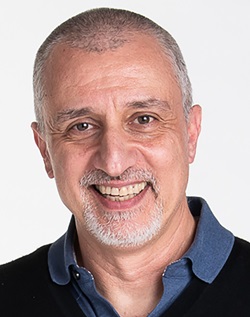 PLENARY: Imaging in the Age of Artificial Intelligence
PLENARY: Imaging in the Age of Artificial Intelligence
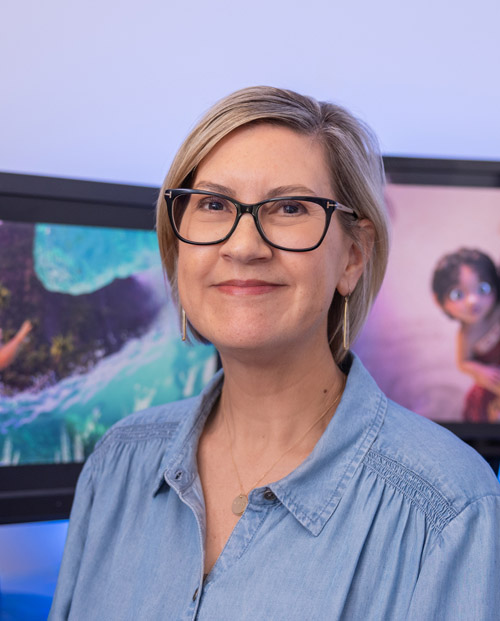
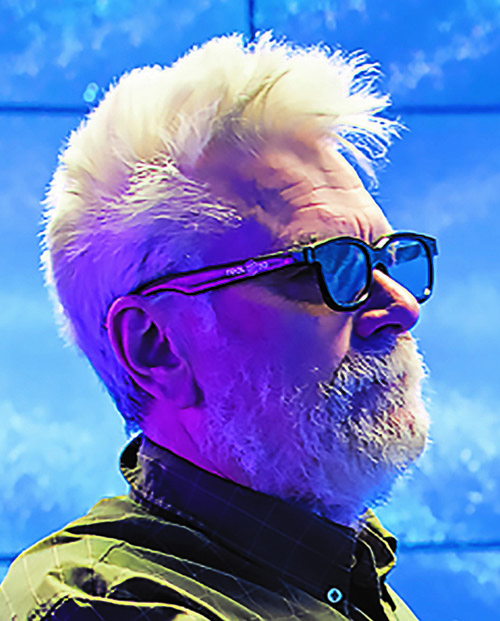
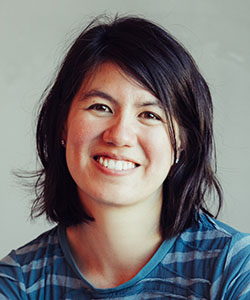 PLENARY: Holographic Displays: Past, Present, and Future
PLENARY: Holographic Displays: Past, Present, and Future
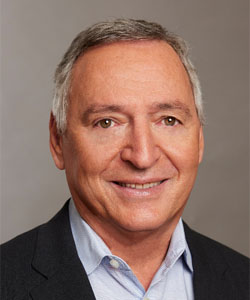 PLENARY: Prime Video: a Differentiated Viewing Experience
PLENARY: Prime Video: a Differentiated Viewing Experience
